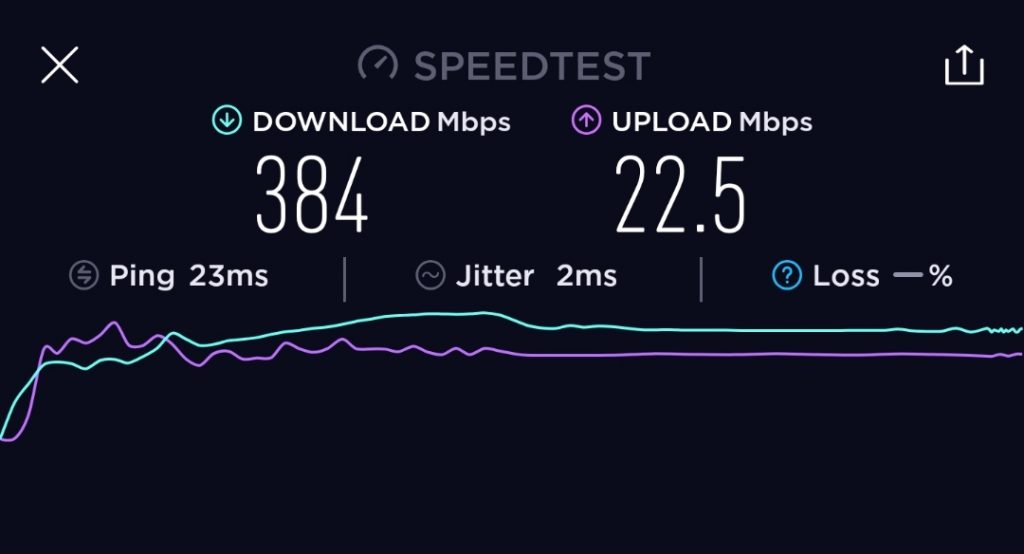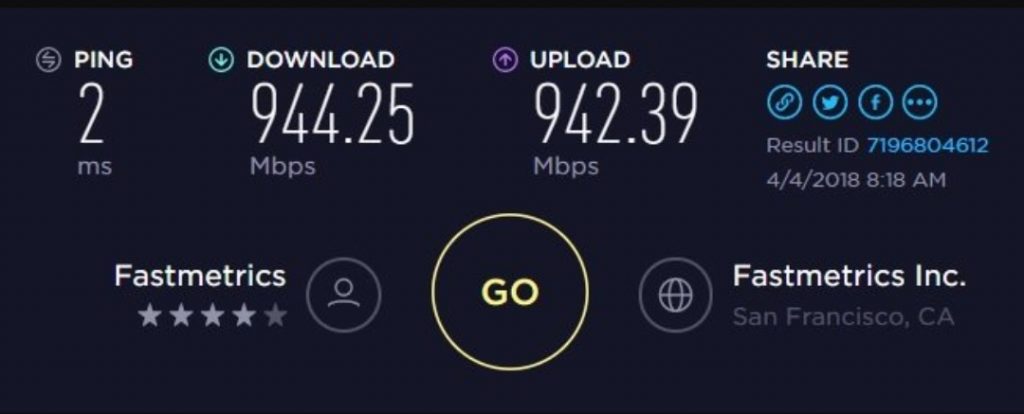We can assess the quality of an Internet connection based on two parameters. One of them would be latency, which is the sum of time delays within a network. Latency can be measured with the ping command that many of you will have heard of on occasion. The other important parameter of a connection is speed. In that sense, we would have to talk both about the upload or upload speed, as well as the download or download speed. In relation to this, we can have a symmetric Internet speed and we are going to explain what it is and how to know if we have it.
We are going to start by explaining what both symmetric and asymmetric speeds consist of, in addition, we will see how symmetric and asymmetric connections have coexisted over time.
Symmetric vs Asymmetric Internet connection: Differences, Brief History, and More
In case you don’t know, both have a lot to do with the upload and download speed of our Internet connection. In that sense we can say that we have a connection with symmetric Internet speed when our download speed is the same as the upload speed. That means that, if for example, we have a symmetric connection of 600Mbps, we will have a download speed of 600 Mbps and also 600 Mbps upload.
On the other hand, we can also have a connection with asymmetric Internet speed when our download speed is different than the upload speed. An example that we could put in this regard could be a fiber optic connection with a 100Mbps download and 10Mbps upload. An important fact to note is that asymmetric Internet connections generally have much faster download speeds than upload speeds.
Traditionally, in US and in many other countries we have had asymmetric Internet connections. A clear example of this has been the ADSL lines that still coexist with fiber optics, and that are gradually disappearing. The ADSL comes from the acronym in English Asymmetric Digital Subscriber Line, translated means Asymmetric Digital Subscriber Line. The name is already telling us a lot and a typical ADSL connection was 10 Mbps downstream with 800 Kbps upstream.
Currently, copper lines are being replaced by fiber optic lines in areas where there is coverage. The main reason is higher speed and better latency. At first, they were mostly asymmetric, but currently with many providers we have a symmetric Internet connection speed. Currently in many places we can enjoy an upload and download speed of 300Mbps, 600Mbps and even 1 Gbps.
Upload speeds matter more and more
The year 2020, apart from the start of the Covid-19 pandemic, will also be remembered for the acceleration of the transition to the digital world. It was a reality that was expected more in the medium term, but in the end the times have advanced. An important change in this regard has been the increase in remote work and the approval of a law on remote work that regulates teleworking.

This has made the Internet connections in our homes essential for many tasks. In this sense, work in the cloud has taken on a major role. Right now, sharing files in the cloud to work or uploading content to it is the order of the day. Also working with a VPN to increase security and that our data is encrypted to the destination point is a very common practice. To that we also have to add individual or group video calls, to perform work tasks that consume a large bandwidth.
As if this were not enough, generally in a home there is also more than one person living together. That means that we have to distribute our connection among several people. In our home we could have more than one person teleworking, studying online or watching streaming content. With which, we are going to depend more and more on our Internet connection. And to finish the situation, we have more and more devices connected to the Internet, we refer to smartphones, PCs, laptops, smart plugs, video surveillance cameras and IoT devices.
This makes it increasingly necessary for our connections to have a significant upload speed. In that sense, having a good symmetric Internet connection can drastically reduce our problems.
Advantages of symmetric connection

Right now the trend is for providers to offer us connections with symmetric Internet speed. As we have already mentioned, in our homes we have more and more computers and devices connected to the Internet. In two 600 Mbps Internet connections, one symmetric and the other asymmetric, we will not notice many differences when browsing the Internet or downloading a file. The reason is because both have 600 Mb of download or download.
However, there are situations in which having a symmetric Internet connection offers us a series of advantages. It occurs especially when, in addition to the download speed, the upload speed is also important. Some typical examples would be:
- WhatsApp, Zoom or Google Meet video calls could be some examples.
- In online games our ping will improve a bit, and also, we will have less chance of suffering the much dreaded lag that gamers suffer.
- Cloud apps like Dropbox, Google Drive, and OneDrive improve how quickly they sync and upload files.
- The videos that we upload to YouTube or to our social networks such as Instagram, TikTok or Facebook also benefit from this.
Therefore, a symmetric fiber connection is bringing us benefits, especially when the upstream channel becomes important.
The connection speed and its relation to the number of devices
We have already seen how having a symmetrical Internet connection benefits especially when it takes advantage of the upload. But we must take into account another factor depending on the speed we have contracted, and that is that we can use a greater or lesser number of devices without our Internet connection being penalized.
An approximate calculation would be the following:
- With 100 Mb you could have between 4 and 7 devices connected.
- Having 300 Mb, between 8 and 15 devices.
- If you hire 600 Mb, between 15 and 25 devices.
- And with 1Gb we could already have more than 25 devices connected.
Check if I have a symmetric internet connection
The easiest way is to use a tool that measures our Internet connection speed. We are going to use a speed test with which we can see what upload and download speed your fiber or ADSL has. An important consideration is that the test should be done using a moderately modern PC or laptop that is connected by Ethernet network cable. The reason is that due to Wi-Fi, not always our routers and equipment can make the most of our connection.
Also, to make it clearer, we are going to give an example with an asymmetric and a symmetric connection. This would be an example of an asymmetric connection :

As you can see there is a big difference between the download speed with 384 Mb / s versus the 22.5 Mb / s upload. As for the example of connection with symmetric Internet speed, it would be the following:

The test was carried out with a 900 Mbps symmetric fiber optic connection. One thing you should know is that in this type of test you usually get a little more than the contracted speed. It would also be normal for a few megabytes to vary between the upload and download speed.